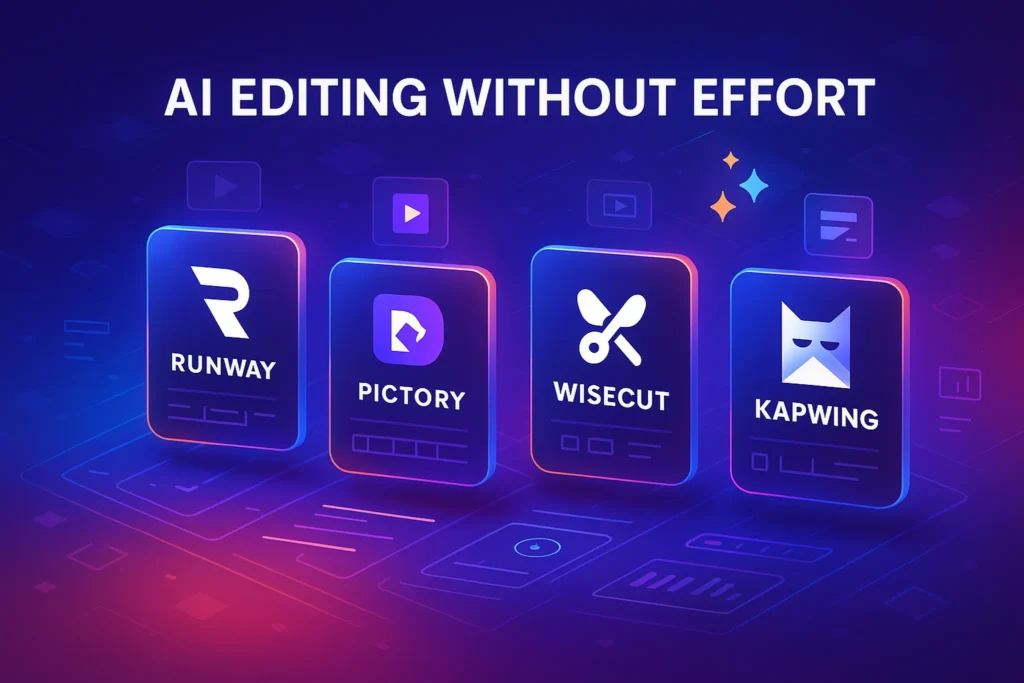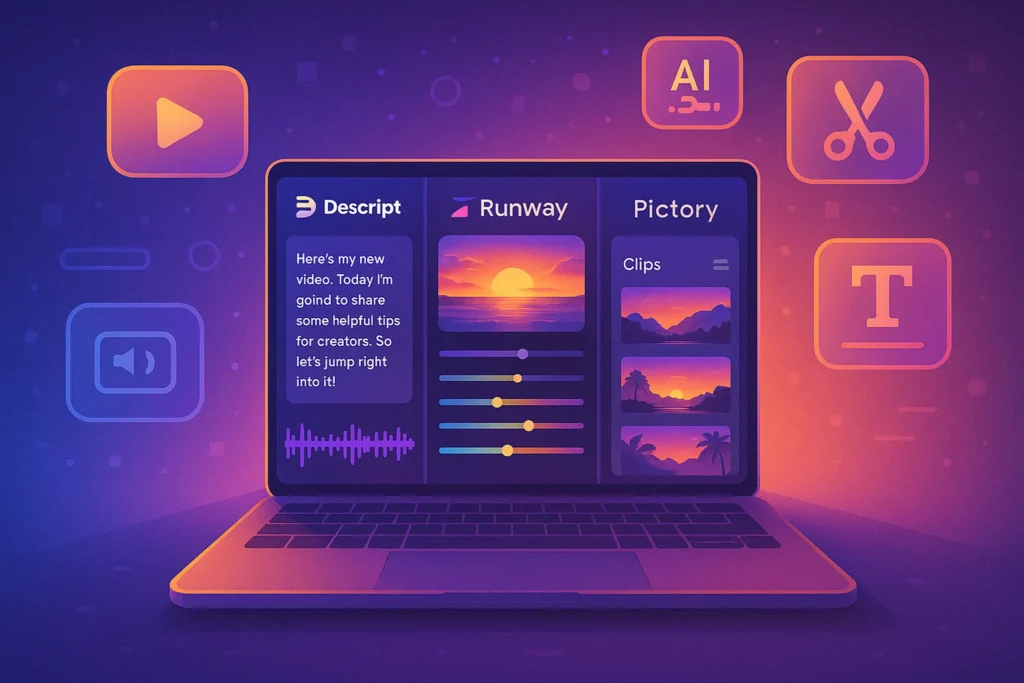🎯 Introduction: Why Ad Revenue Isn’t Enough Anymore
For years, creators have relied on YouTube AdSense as the default way to monetize their content. But unless you’re clocking millions of views monthly, ad revenue alone won’t pay the bills — or justify the time you spend on scripting, shooting, and editing.
In today’s creator economy, successful video entrepreneurs are thinking beyond the basics. They’re building layered income streams: from sponsorships and affiliate deals to fan memberships and digital product sales.
This post walks you through all the modern ways to monetize video content in 2025 — strategies used by real creators, not just theory.
🤝 1. Sponsored Videos & Brand Deals
Why It Works: Sponsorships offer direct monetization without relying on platform algorithms or ad policies.
How It Works:
In a sponsored video, you collaborate with a brand to feature their product or message in your content. This could be an intro shoutout, a product demo, or full integration depending on the agreement.
Top creators use media kits and pitch decks to present their audience data and engagement stats. Even smaller channels can attract brands if they serve a niche — especially in sectors like fitness, finance, tech, or parenting.
💡 Example: A tech channel with only 15K subscribers but high engagement secured a $750 sponsorship deal with a productivity app thanks to their tight niche and 8% CTR on links.
Pricing Tip: Start with the $20–25 CPM (Cost per Mille) model, then adjust for niche and engagement. Use platforms like FameBit, Grapevine, or direct email outreach.
✅ Related strategy: Learn how to build a video marketing funnel that naturally attracts sponsors by aligning your audience with brand needs.
🔗 2. Affiliate Marketing in Videos
Why It Works: Affiliate links earn you passive income whenever viewers buy something through your referral — even months after the video is published.
How to Use Effectively:
-
Mention the product authentically in the video
-
Add shortened, trackable affiliate links in the description (use tools like ThirstyAffiliates or Geniuslink)
-
Use “First comment” pinning to surface your CTA
💡 Example: A tutorial video on productivity tools includes affiliate links for Notion templates, time trackers, and books — generating consistent monthly commissions.
Best Niches for Affiliate Video Content:
-
Tech Reviews
-
Digital Tools & Software
-
Education / Online Learning
-
Beauty & Skincare
-
Home Office Gear
💡 Check out our Top Zapier Automations Every Creator Needs — a great example of content that naturally supports affiliate links.
👕 3. Merchandise & Online Course Sales
Why It Works: Selling your own products—physical or digital—offers the highest profit margin and full ownership of your brand.
➤ Merchandise
Platforms like Teespring, Printful, and Spreadshop let you sell custom shirts, mugs, phone cases, or even journals with no upfront cost. They handle production and shipping — you just focus on promoting it.
This works especially well for creators with loyal fanbases or a recognizable aesthetic. Think catchphrases, mascots, or personal branding.
💡 A gaming channel with 10K subs launched a limited hoodie drop and sold 100+ units in a week by hyping it up with behind-the-scenes YouTube Shorts.
➤ Online Courses or Digital Products
If you teach something — editing, productivity, fitness, writing — turn that into a Gumroad, Thinkific, or Podia course.
Add a module-based course, offer lifetime access or bundle templates/worksheets, and link it from your YouTube video description and end screen.
🎬 Nerd Tip: Pair your course with value-heavy educational videos during the Consideration stage of the video marketing funnel.
🫶 4. Fan Funding: Support from Your Audience
Why It Works: Loyal viewers are often willing to contribute, especially if you offer something in return (behind-the-scenes, early access, live chats, etc.)
Top Platforms:
-
Patreon – Tier-based memberships, exclusive content
-
Buy Me a Coffee – One-time tips or donations
-
YouTube Memberships – Integrated with your channel, includes emojis, badges, and gated content
💡 Real Case: A minimalist vlogger with 5K subscribers earns $900/month from 170 Patreon supporters, offering only 2 bonus videos/month.
Growth Tip: Use your community tab, video outros, and pinned comments to build awareness. Keep perks realistic so you don’t burn out.
🎯 Want to Master Video Monetization?
Get our free checklist “7 Monetization Tactics That Actually Work in 2025” – including smart affiliate tools, fan funding tips, and creator-first platforms you should know.
Perfect for YouTube, TikTok, Reels & more.
🛡️ 100% spam-free. Just weekly creator insights from NerdChips.
🎥 5. Content Licensing & Reuse
Why It Works: If you create viral or high-quality footage, brands, media agencies, or publishers may want to license it — especially travel, nature, or dramatic moments.
Licensing Platforms:
-
Jukin Media
-
Storyful
-
Newsflare
-
ViralHog
Upload your footage, tag it appropriately, and if a buyer is interested (brand, media outlet), they’ll purchase rights to use it. In return, you earn royalties or a fixed licensing fee.
💡 Nerd Tip: Always film in 4K if possible. Higher resolution = better chances of licensing.
🧠 Choosing the Right Monetization Model for Your Niche
One of the biggest mistakes creators make is trying to monetize their video content without aligning the method with their audience or niche. Not every monetization strategy is right for everyone. Here’s how to choose the most effective path:
-
Educational or “how-to” creators often see great results from selling digital courses, templates, or premium tutorials through platforms like Thinkific, Teachable, or Gumroad.
-
Entertainment-focused creators with high engagement may benefit most from fan funding platforms like Patreon, YouTube Memberships, or Buy Me a Coffee. This approach rewards consistency and community.
-
Review and tech channels should lean heavily into affiliate marketing, especially with tools like Kit.co (for curated gear lists) or Impact (for SaaS products).
-
Business/B2B channels are best positioned for sponsorships or affiliate programs in professional services — like project management tools or SaaS platforms.
-
Lifestyle vloggers with a strong brand identity might find success selling merch or launching a membership community via Substack or Discord access.
💡 The key: Start with one method that fits your niche and audience. Then layer others over time as your brand grows.
🧩 The Creator Lifecycle: Matching Monetization to Growth Stages
Not every monetization strategy fits all creators equally. Depending on where you are in your content journey, the approach that works best can vary drastically. Here’s how to align monetization with your current stage:
🐣 Stage 1: Early Growth (0–1K Subscribers / Followers)
-
Best Monetization Focus: Affiliate links and Buy Me a Coffee links.
-
Why? You don’t need large audiences to earn. If your audience is highly targeted, even a few conversions matter.
-
Smart Strategy: Use compelling storytelling or personal reviews to link products you genuinely use.
🚀 Stage 2: Traction & Trust (1K–10K)
-
Best Monetization Focus: Brand deals (micro-influencer tier), digital product pre-sales, Patreon.
-
Why? You now have a core community. Brands value even small influencers with strong engagement.
-
Smart Tip: Build email lists. Start offering exclusive content or shoutouts via paid community tiers.
🌟 Stage 3: Scaling Up (10K+)
-
Best Monetization Focus: Full merch lines, online courses, YouTube Memberships, and licensing deals.
-
Why? You can now build product ecosystems. YouTube’s built-in monetization and content reuse becomes lucrative.
-
Smart CTA: Promote your own offer inside your videos, not just in the description.
📌 Knowing where you are in the Creator Lifecycle helps you avoid burning out trying to “do it all” at once. Pick 1–2 monetization tactics that match your current audience size and focus.
🛠️ Monetization Platforms & Tools: Side-by-Side Comparison
Here’s a quick look at the most used platforms for monetizing video content, and how they compare based on cost, usability, and best use case:
| Platform | Type | Cost | Best For | Pros | Cons |
|---|---|---|---|---|---|
| Patreon | Fan Support | 5–12% of earnings | Creators with tight-knit communities | Built-in memberships, tiers | Requires constant content updates |
| Gumroad | Digital Product Sales | Free to start (fee per sale) | Selling digital courses, templates | Easy setup, low barrier | Basic analytics, limited custom branding |
| Thinkific | Course Platform | Paid Plans | Professional course creators | Rich features, bundled offers | Higher learning curve |
| Teespring (Spring) | Merchandise | Free | Branded merch (tees, mugs, etc.) | No upfront cost, integrates with YouTube | Limited control over print quality |
| Shopify + Printful | eCommerce + Merch | Starts at $39/mo | Full product stores | Full control, higher quality | Requires setup, design, ongoing upkeep |
| Jukin Media | Licensing | % Based | Viral content reuse | Can sell rights for big brands | Niche and limited to certain content |
| YouTube Memberships | Fan Support | % Share | YouTube-centric creators | Seamless integration, badges & perks | Requires YouTube Partner status |
📊 Quick Comparison: Monetization Models at a Glance
| Strategy | Ideal For | Ease of Setup | Passive Potential | Tools/Platforms |
|---|---|---|---|---|
| Sponsored Videos | Niche experts or creators with reach | ⚙️ Medium | 🔁 Low | Collabster, Channel Pages |
| Affiliate Marketing | Tech/tutorial/review creators | ✅ Easy | 🔁 High | Amazon Associates, Impact |
| Merch/Courses | Lifestyle or educational creators | ⚙️ Medium | 🔁 Medium–High | Printful, Gumroad, Shopify |
| Fan Funding | Entertainers, vloggers, niche fandoms | ✅ Easy | 🔁 Medium | Patreon, Ko-fi, Buy Me a Coffee |
| Licensing | Viral, cinematic, news-style content | 🔧 Hard | 🔁 Low–Medium | Jukin Media, ViralHog |
📦 Summary: Pick the Right Mix for Your Channel
| Strategy | Best For | Tools You’ll Need |
|---|---|---|
| Sponsorships | Niche creators w/engagement | Pitch deck, FameBit, Collab platforms |
| Affiliate Marketing | How-to, Review channels | ThirstyAffiliates, Kit.co |
| Merch & Courses | Personal brands | Printful, Gumroad, Teachable |
| Fan Funding | Loyal niche audiences | Patreon, BMAC, YT Memberships |
| Content Licensing | Travel / Viral creators | Jukin Media, Storyful |
🧠 Nerd Verdict: Is YouTube Monetization Broken?
Relying on YouTube ads alone is like building a business on rented land. Ad rates fluctuate, demonetization happens, and algorithms shift.
But when you take control — by introducing smart affiliate links, launching your own product, or nurturing superfans — you transform from a “content creator” to a video entrepreneur.
In 2025 and beyond, monetizing video isn’t about chasing virality. It’s about building trust, offering value, and strategically converting attention into income.
❓ FAQ: Nerds Ask, We Answer
💬 Would You Bite?
If YouTube removed ads tomorrow, how would you monetize your channel?
Share your answer in the comments — we’re featuring the best ideas in our newsletter! 💬



